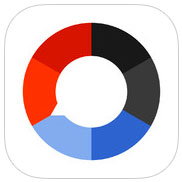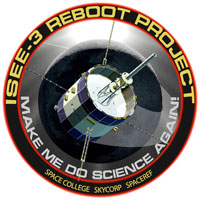
A flashlight that ditches the batteries in favor of body heat is one of the finalists in Google’s 2013 Science Fair.
Ann Makosinski, 15-year-old Canadian student, created what she calls the “Hollow Flashlight,” a device that harvests energy from the human hand to power itself.
Makosinski created a prototype using Petier tiles she bought on eBay, which produce electricity when one side is heated and the other cool. After tinkering with a few designs, she found that she could mount the Peltier tiles on a hollow aluminum tube that had been inserted into a PVC pipe.
She cut out a spot on the PVC tube where the hand could warm the tiles, while ambient air from the PVC tube cooled the other side of the tiles. The result was a flashlight that could shine for more than 20 minutes if the outside temperature was more than 5 degrees Celcius (about 34 degrees Fahrenheit).
The final prototype cost her US$26, but Makosinski believes the product could be produced in mass quantities for less.
In her project description, Makosinski wrote that she was inspired by the idea that humans are “walking 100 Watt light bulbs” whose energy could replace the battery’s function in a flashlight.
That focus on harvesting excess energy is an important step in determining how more products could run without having to use batteries, said Albin Gasiewski, director of the Center for Environmental Technology at the University of Colorado at Boulder.
“We use an enormous amount of batteries,” he told TechNewsWorld. “Most of them are not rechargeable and end up in landfills. Even with the ones that are manufactured as green as possible, we don’t want them in those landfills.
“Harvesting energy, like with this flashlight, can provide a lot of potential for powering small devices without necessarily having to have batteries,” he continued. “We have a lot of available energy like ambient light in a room and radio energy that should be utilized.”
Google’s Search for Best New Ideas
Makosinski’s project is one of 15 finalists picked from thousands of submissions from more than 120 countries. The theme for Google’s 2013 Science Fair is “It’s your turn to change the world.”
Some of the other contenders in this year’s competition include a 16-year-old Turkish girl who came up with a way to use banana peels as a replacement for petroleum-based plastic and a 14-year-old Australian boy who proposed a way to improve the response time and efficiency of emergency vehicles. An American girl believes her superconductor tape can help end the rare earth materials shortage.
The finalists have earned a trip to Google’s Mountain View headquarters, where they will present their projects this September for a final round of judging.
“Our judges evaluate the eight sections of each participant’s project and look for, among other things, creative ideas, solid research and good, clear structure,” Google spokesperson Shannon Newberry told TechNewsWorld.
The winner will receive a US$50,000 scholarship and a 10-day trip to the Galapagos Islands.
This is Google’s third science fair. The two past grand prize winners both submitted projects related to biomedical science. The 2012 champion, Brittany Wenger, designed a Web app to diagnose cancerous tumors. Shree Bose, the 2011 winner from Texas, took home the grand prize for her work with a chemotherapy drug commonly used to fight ovarian cancer.
Next Step for Flashlight
If Makosinski can become Google’s third grand prize winner, the award and cash will only be the first step in what could be an opportunity to bring a viable product to the market, said the Center for Environmental Technology’s Gasiewski.
“Whether you’re young or old, the same rules apply,” he noted. “The next step is to engineer the next prototype — one that doesn’t just display the principle of the product but demonstrates that it is, among other things, long-lasting, affordable, and doesn’t break easily or get ruined when it’s wet. With that prototype, one has the ability to find investors or venture capitalists and try to get the product to market.”
That process comes with challenges, Gasiewski acknowledged, but products that use alternative sources of energy are only becoming more popular among mainstream consumers, and the time could be right for Makosinski’s flashlight to have a place in that market.
“People are coming out with a lot of interesting devices, and I applaud Google for putting prize money towards the development of those innovative ideas,” he added. “It’s only building confidence, especially among young people, for what is going to be a very innovative global marketplace for high-end tech products going forward.”





















































